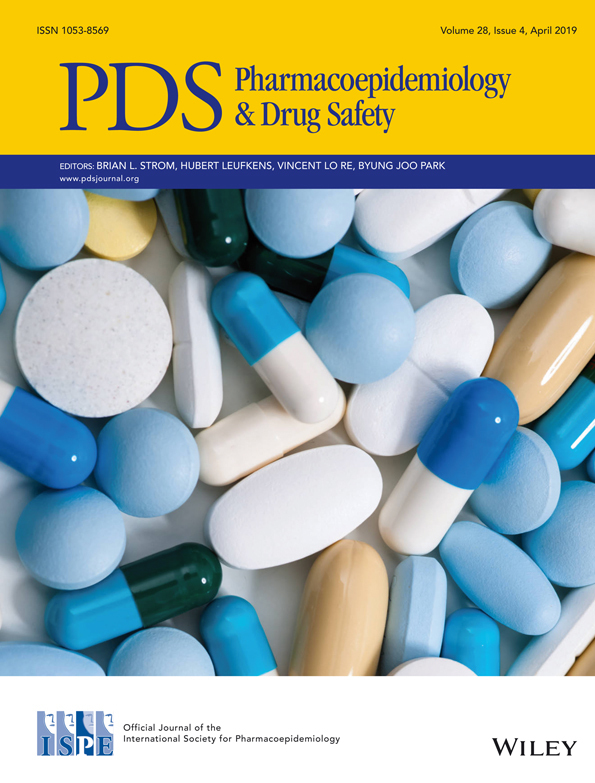Use of dipeptidyl peptidase-4 inhibitors and the risk of arthralgia: Population-based cohort and nested case–control studies
Abstract
Purpose
The objective of this study was to investigate the association between the administration of dipeptidyl peptidase-4 (DPP-4) inhibitors (cumulative duration, timing, and individual substance) and the risk of arthralgia by using a nationwide database with two methodological approaches including cohort and nested case–control study designs.
Methods
Using Taiwan's National Health Insurance Research Database, we identified patients who were newly prescribed with DPP-4 inhibitors, thiazolidinediones (TZDs), or acarbose between 1 March 2009 and 31 December 2012. The exposure of studied drugs was categorized into five exclusive categories: DPP-4 inhibitor, TZD, acarbose, combined use, or non-use, and assessed in a time-varying manner. Time-dependent Cox proportional hazard models were used to estimate the association between DPP-4 inhibitors and the risk of arthralgia. Particularly, we tested the impact of different cumulative duration, timing, and individual substance of DPP-4 inhibitors use on risk of arthralgia. A corresponding nested case–control study using conditional logistic regression was conducted to verify this association.
Results
An increased risk of arthralgia was observed during the first year after initiating DPP-4 inhibitors (adjusted Hazard Ratio = 1.35; 95% confidence interval [CI], 1.04-1.75) but the risk declined with cumulative use. This duration–response relation was not found in TZDs use and acarbose use. In the nested case–control study, there was a slightly increased risk of arthralgia (aOR = 1.08; 95% CI, 1.04-1.12) associated with current DPP-4 inhibitor use.
Conclusion
A relatively higher risk of arthralgia was associated with the initial administration of DPP-4 inhibitors, however, the risk declined among long-term users.
CONFLICT OF INTEREST
The authors declare no conflict of interest.




